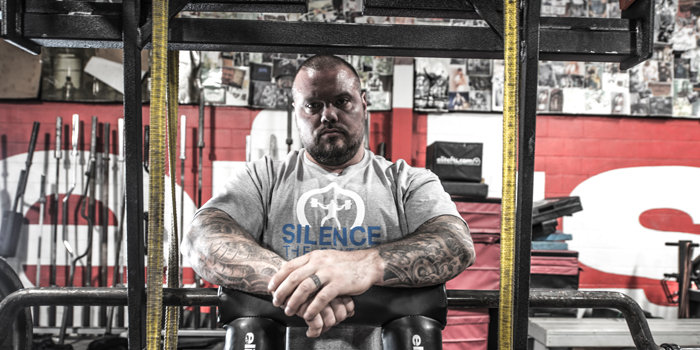
If you haven’t already checked out the first collaboration with some friends of mine in the field (Steffen Smith, Nick Novacich, Steve Konopka, Steve Welch, Tyler Jennings, Jeff Miller, and Chris Thacker), you can do that by clicking here.
Reading that article will help you understand the background and opinions of each of the coaches and lifters I interviewed.
RECENT: Circuits and Supersets for BAMF Wrestlers
If you haven’t yet, read Part 1 of this three-part series, “Improve Your 1RM Squat with These Variations,” where all of my friends and colleagues gave advice on the best movements to help improve a 1RM squat.
For this article, I asked everyone:
Besides actually performing the bench press, in your opinion and from your experience, what is the next best movement to improve the lifter’s 1RM? It can be anything from a secondary movement, an accessory, a certain machine, etc., with reasoning or example of why.
It is great to get advice from across the country and hear what works for whom. It is my hopes that after reading this, the reader will pick up something to help them perform a better bench press.
This should help take away some trial and error on the reader as well. There is no wrong or right with the answers they gave. This is something that has helped them.
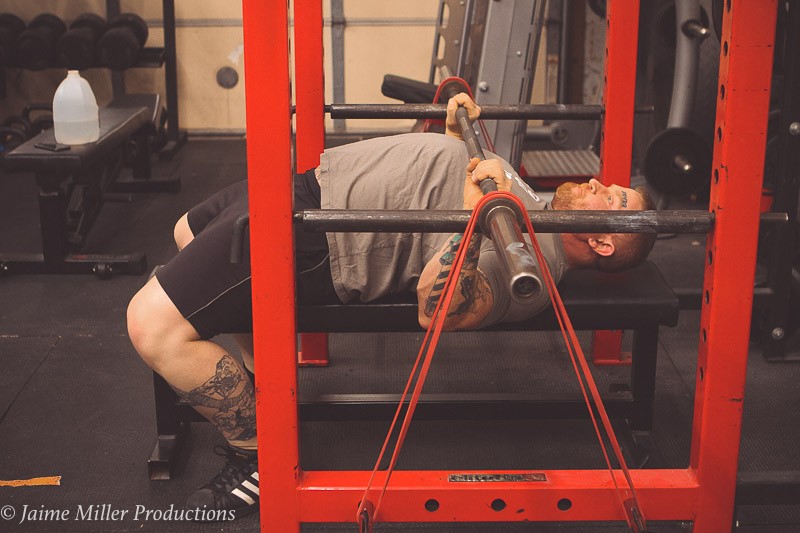
Steffen Smith
Raw lifter at Max Barbell Gym in Springfield, Illinois
One variation that has assisted many lifters with their bench press is the pin press, or dead press. The set-up is simple: get to a rack, slide a bench in, and set the pins at an elevation that places the bar on or very minimally above your chest. The pin height can be any height, depending on your intention and purpose of including the exercise. For this submission, we’ll start the bar on the chest.
Something to consider is that the eccentric, or lowering/loading, phase is eliminated, so when choosing the resistance to be used, 70 percent, for example, is much more difficult to move, or at least in comparison to a standard flat bench. Perform these as singles, as the benefit lies in the absence of the eccentric portion.
This lift will really build speed of the chest, while still benefitting the entire lift, as conventional bench press range of motion is completed from beginning to end.
Another element I’ve introduced to this exercise that seems to work really well is bands. Resistance bands will do two things, accommodate resistance, and potentially maximize each repetition performed.
As the bar begins its ascension from our body, we gain some mechanical advantage with each inch or less. The lift doesn’t get lighter, but our body is moved into a more optimal position, that’s favorable to moving heavier weight. How many raw benchers miss the lift at lockout?
We added bands to the pin press, and it aids in speed off the chest, as well as getting some heavy top end work, maybe even some overload, depending on your band/plate ratio. Try them out! Pin presses are a good challenge, and adding the bands seems to yield benefits pretty quickly based on what I’ve witnessed.
Nick Novacich
Multi-ply lifter at Tanks Training Facility in Granite City, Illinois
Throughout my lifting career, my bench press has always been the weak link in my chain. I have sought out numerous coaches and solicited advice from everyone I’ve met and/or trained with that had a better bench than me. I’ve always made it a point to train with those people (when feasible) to try to learn as much as I can, and also to force myself to work harder so that my bench can increase.
Over the years I have heard just about every form of technique adjustments imaginable, and I have had tons of advice given to me, some good and some not so good, as to what supplemental and accessory work to do to build my bench.
What I have found is that there is no secret program, technique, or tweak that can replace understanding your own body mechanics and tracking what works FOR YOU to get better. It’s a long road, but it’s one you’ll appreciate when you start seeing improvements.
When bench pressing, it is important to understand whether the lifter intends on competing raw or in a shirt. On one hand, I have been told that you have to train specifically for raw or for geared, and then I’ve also been told that you can train the same regardless, and you will improve. I have found that the answer lies somewhere in between for me.
When I am training raw, I have found that the more my overhead press goes up, the more my bench press goes up. I am currently on a hiatus from competition and I am focusing on my raw bench now to bring up some deficiencies in my upper body. I am hammering overhead presses of all types. I am hitting seated, standing, barbell, dumbbell, etc., and I am working this with the same focus and drive as if I was preparing to enter a meet that had overhead press instead of bench press. I am currently working on three top sets of five, and I will ride this until the wheels fall off. When I stall, I will drop down to three sets of three and then singles until I no longer make gains. Once that happens, I will shift my focus again to the bench and see what progress I have made.
Make no mistake, I am still benching during this process. I have adjusted to a narrower grip, and I am now placing my pinkie on the line as opposed to my index finger, which is my normal grip. In doing this, I have found that I can engage my triceps harder and really focus on fighting my way through my usual sticking point which is about three inches off my chest. I am, of course, seeing a dip in the weight I can handle, and my triceps are sore as hell, but I am confident this will bring my bench up whenever I transition back to my normal grip.
Now, I have to discuss benching in a shirt. I have found that for the most part, my bar path is very similar in both my raw bench and my geared bench. This is mainly due to my set-up and arch that I utilize (I know, I know, I’m cheating). With this said, for my last meet prep, I hammered the hell out of my triceps. So much so that instead of a dynamic/repetition bench day, I only came in and worked triceps and a little extra shoulder work on that day. I focused on hitting heavy JM Presses, Tate Presses, Close Grip Benches, and Rolling Triceps Extensions to build my lockout strength. I worked in the six to eight reps range and then followed that up with some form of high rep triceps movement to flush blood into the muscle and aid in recovery. By doing this, I found that on my max effort bench day, my triceps were fired up and ready to go and my CNS wasn’t as fried because I wasn’t benching twice a week.
Please understand that this is what works FOR ME. These methods may not work for you, but give them an honest try and take away what you feel worked and discard the rest.
Steve Konopka
Strength and conditioning coach at Strength N Honor Training in Simsbury, Connecticut
For the 1RM bench, there are a lot of options here. Like the squat, depending on where the athlete is weakest in this, the movement is where we would attack if we were working with a single athlete for a bench competition. But for field athletes, it has to carry over to the field, and one exercise I have seen really carry over to bench press power and then to the field with locking people out are dips, and for more experienced athletes, weighted dips.
It’s not fancy or elaborate, but see how many slow controlled dips you can perform and see where your bench is. Now start dipping. Usually, my athletes will double their number of reps mid-way through the off-season session, and that always lines up with our halfway 1RMs. When I see the dip reps doubled for an athlete or 12 reps with one plate or chain go to 12 reps with two plates or two chains, I know that bench is going to be a pretty big jump — it always is.
Try it yourself once you’ve doubled your dip total with slow controlled reps, see where your 1RM is. This really works great for the younger lifters with only two to three years under their belt.
At our facility, the rule of thumb is if you can’t do five slow reps around a 1:3 tempo, you’re doing negatives of five seconds. We assist you up and you control for a five-second negative down. The time under tension here really helps boost that strength.
As for our more experienced athletes with over 15 reps, we are trying to increase resistance by any means necessary, such as Spud Inc. belts with some plates, like in our video, or chains and bands. For our savages, we will even combine all three!
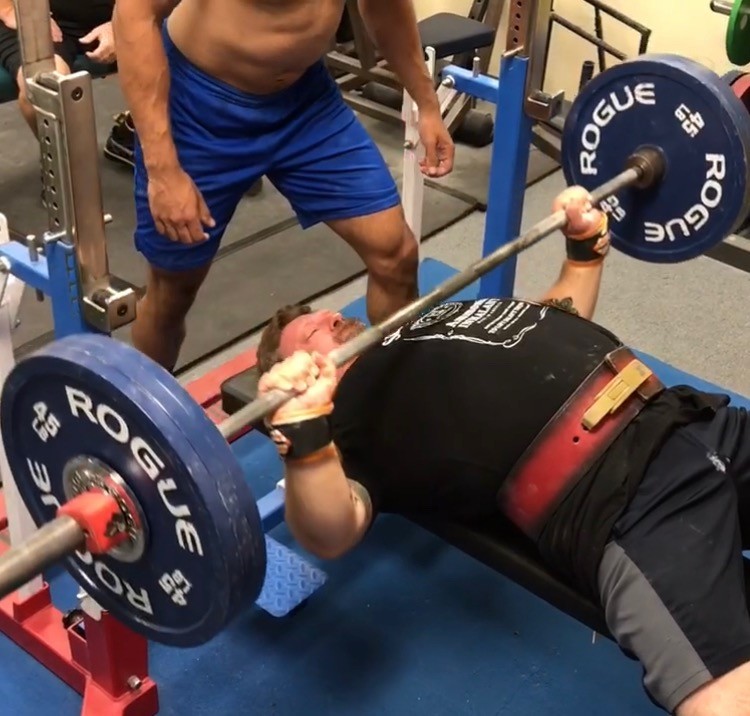
Steve Welch
Single-ply and raw lifter, gym owner of Max Effort Strength and Conditioning, and owner of Skull Smash Ammonia in St. Louis, Missouri
It’s difficult to say what the “best” variation of a lift is, or what the “best” assistance exercises are because that will vary for each individual: what their strengths and weaknesses are, and what they are training for. But I have consistently seen solid results from this variation of the bench. I will break it down a little and explain why I like it. Keep in mind as you read this, I’m choosing this with the mindset of developing a stronger raw bench. I believe that a strong raw base is necessary to be as good as you can be, even in multi-ply gear as well.
Spoto Press: I’m a huge fan of this movement, and I find it to be beneficial for all levels of lifters, from novice to elite. The Spoto Press can simply be thought of like a suspended pause press. Instead of lowering the bar all the way to your chest, you stop the bar an inch or two from your chest, and pause it for a second or two, then generate full force pressing it back up.
Powerlifting bench pressing is unique to the regular “gym bro” bench pressing in several ways, most notably being that in the sport of powerlifting, we have to pause the weight at our chest before being able to lift it back up. This increased time under tension and resulting loss of stretch reflex stored in the muscles and connective tissues from the lowering of the bar in the eccentric phase makes the exercise more difficult... At least until you’ve trained yourself to be good at pausing weight, which can take years.
The Spoto Press keys in on developing several of the areas needed to be more technically viable, more comfortable, and more confident in the most vulnerable spot on the bench press, and, of course, builds strength in the bench overall.
I like the Spoto Press because it magnifies the difficulty of pausing weight but also the need for keeping tight and coiled into your bridge and then exploding off the chest.
People think of the bench as a “chest” exercise. And yes, while the pectoral muscle group is one of the main agonist muscle groups involved in lifting the weight in the bench press, I always say that if you’re benching for strength and performance, you oftentimes won’t even feel chest fatigue because you’ve used your secondary and stabilizing muscle groups to the fullest, which is required for being as good as you can be when benching. Pausing weight an inch off your chest while maintaining perfect form and a tight bridge will certainly illustrate how much more is involved in the bench press than just the chest.
Plain and simple, you won’t find too many great benchers who don’t have strong backs and triceps (biceps are important too). When I do the Spoto Press, I focus on keeping my lats as tight as possible, and I keep my shoulder blades pinched in and down (scapular adduction and downward rotation).
The mental cue I use is pretending you are folding the bench in half with your upper back. And while I’m keeping my lats tight, I’m pushing down as hard as I can with a constant, not pulsing, pressure into the floor with my feet. I keep my glutes as tight as possible while doing this, and your hamstrings may feel this as well. Keeping all these things tight happens before the bar even comes out of the rack.
As I’m bringing the bar out of the rack into my starting position, I squeeze the bar as hard as I can and flex my triceps, while making sure I retain my lats’ and glutes’ tightness. Keeping everything you just did as tight as possible, begin your lift. Bring the bar down in a controlled way and get a deliberate, confident, full, and noticeable pause one to two inches from your chest. Keeping your form, explode the weight back up, and repeat.
The Spoto can be done in a variety of grips. My personal favorite two are my standard competition grip and a close-grip variation, which will emphasize greater stress on the triceps.
In the close-grip variation, I don’t go excessively close. For me, it’s just about three to four inches closer than my normal grip. I typically perform Spoto Presses with three to five sets of six to eight reps. I look to pick a weight that is certainly challenging, and that makes me glad to be done when I’ve finished the last set, but also make sure you can keep strict and don’t lose your form. Having said that, once in a while, I will do a set or two of lower-rep Spoto Presses with heavy weights. I don’t do this until I’ve been doing them for a few weeks, and I feel that my shoulders have really adjusted to suspending the weight in a static hold. Once I feel that, I go for a heavy set or two.
The Spoto Press is a great movement, and in my opinion, it should make regular appearances in just about anyone’s training programs. If you’re brand new to it, start a little on the light side until you get a feel for it. Then start working in more challenging sets, or even making it your primary bench variation for a few weeks. Give it a shot. I think you’ll be glad you did. Thanks!
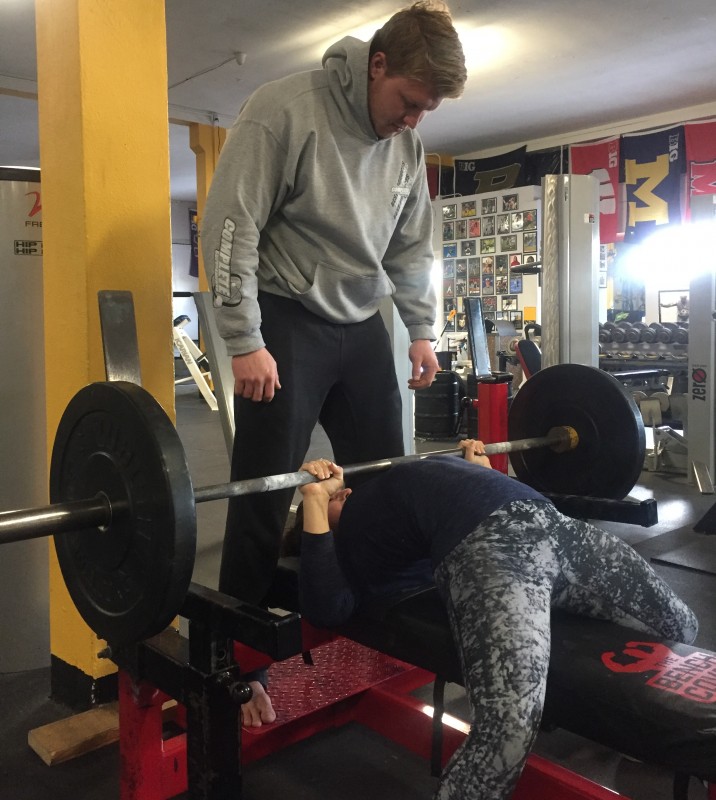
Tyler Jennings
Raw powerlifting and coach at Tanks Training Facility in Granite City, Illinois
The accessory movement that I have seen work extremely well at improving the bench press 1RM would be the close grip bench press. It’s not complicated; it’s just how it sounds.
Just grip the bar with a narrower grip compared to your competition grip. The benefit comes from the increased range of motion and the closer grip shifting more of the load to the triceps, which is what we want to target for benching in a safe and effective manner.
The close grip bench can be performed as max effort work, speed work, or repetition work, and can be utilized in many other accessories as well close grip board work, close grip pin press, close grip Spotos, etc., all of which are good tools in bringing up the bench.
Look at the top bench pressers. What’s one thing they all have in common? Big arms and big strong-ass triceps. So do some close grips, build those triceps, and over time your 1RM will increase.
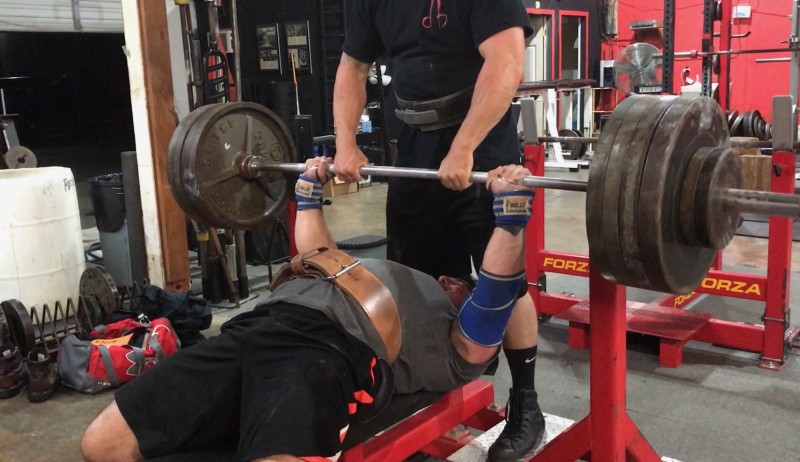
Jeff Miller
Multi-ply lifter at Diablo Barbell in Concord, California
I will start by saying what works for me, may not work for you. We have different strengths and weaknesses, experience levels, body types, etc. With that being said, my favorite and most effective supplementary movement for the bench press has been the floor press. I know, it’s a very well-known move, but if used strategically, it is a great addition to your bench press training. The floor press really can be used as a main, supplemental, or accessory movement. I use it 90 percent of the time as my supplemental move.
First, let’s quickly touch on a few of the numerous benefits of the floor press.
- Removes the leg drive from the lift.
- Easier on the shoulders and can still use most bench press variations (i.e., boards, chains, different bars, etc.)
- Easier on the lower back. On days where my back is “cranky,” I can go to the floor press and still get the work in.
- Can still work different weaknesses. If you want to work mid/lockout strength, don’t use a pad underneath or use boards. If you want to work a full range of motion off the chest, lay on a pad.
- Since you’re relying solely on the upper body, the floor press teaches how to stabilize your lats, tris, etc.
The floor press is a move that can be used in so many different ways, for so many different reasons. When working a shorter range of motion, the floor press takes out the stretch shortening cycle from the lift. This is because you’re going to get to the concentric portion before you’ve stretched the pecs enough to have a stretch-shortening cycle. This makes the triceps, pecs, back, etc., have to work even harder to lock the weight out.
Another aspect is that I can gauge my regular bench off of my progression in the floor press. The floor press has a direct correlation with the bench press. If my floor press goes up 20 pounds, my bench is up at least 20 pounds.
What I really love the most, though, is the fact that you’re directly challenging the upper body while learning how to stabilize without lower body involvement.
As mentioned above, I typically use the floor press as a supplemental movement. While it depends on my goals at the time, I would normally use four to five sets at three to five reps in the 80 percent range. I do like using the parameters laid out in Prilepin’s Chart, but I also go by how I’m feeling that day.
Tips:
- Stay tight and controlled on the eccentric portion
- Know WHY you’re using the floor press. Are you trying to isolate the upper body, are you working around pain/injury, etc.? Always know why you’re doing something.
- Even though you’re not using leg drive, make sure to squeeze your butt and legs as hard as you can throughout the entire lift.
- Crush the bar in your hands as tight as you can. You want to recruit as many muscle fibers as possible.
- Place your legs flat on the ground to ensure you fully isolate the upper body.
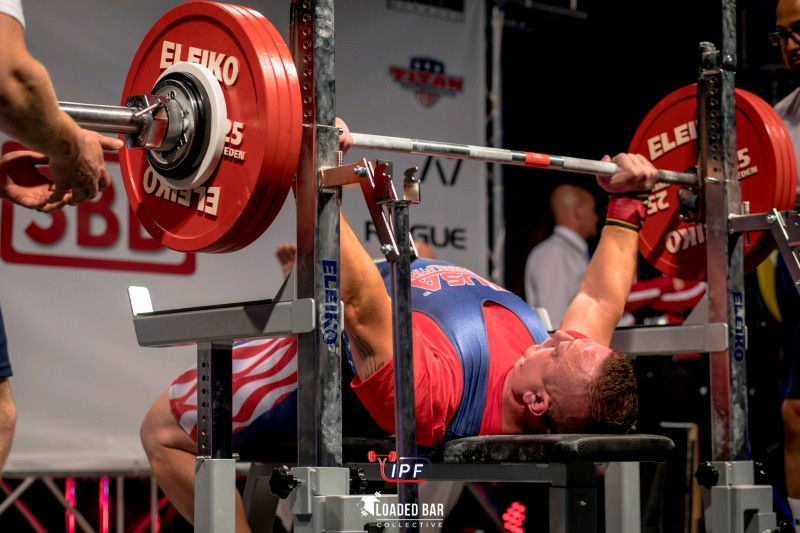
Chris Thacker
Raw lifter at The Lab in St. Louis, Missouri
So to pick up from the last article, and following the same theme, I stake my claim in how it has impacted me, my training partners, the athletes we have applied this to at The Lab, and those who have had a hand in writing the program. Most of you aren’t going to like this answer, whereas there are a few that will get it.
To increase your 1RM bench press, you need to bench MORE, as in, MORE FREQUENTLY. Honestly, high-frequency training will vastly improve all three lifts, but that is for another discussion.
Clearly, it goes without saying that the bench press is the common denominator across any strength endeavor. The worn out, beat to death, cliché question, “How much ya bench?” is the first way to make my eyes roll completely into the back of my head and react violently. But I pause and repeat this wise old statement, “You don’t know what you don’t know,” or in this case, “they.” The uninformed ask that question to “measure their dicks,” and they may actually get a factual winner if they had just started there...
Sorry, annoying tangent over, back to strength endeavors. No matter where you are in your pursuit, one can easily assume that you have read and applied countless cues, technique changes, exercises, loading schemes, and every bastardized method in between. Furthermore, along that long twisting road, it can also be assumed that you have had some sort of shoulder ding that has sent your numbers backward.
Trust me, I have been there, too, chasing every shiny object that grabbed my attention. I don’t know if that path is a rite of passage to a better bench, but it sure as hell seems like it is, especially for those of us not gifted with an impressive bench, which is basically 90 percent of the population.
I have been fortunate to be surrounded by incredible strength athletes (of many disciplines) and with that even greater strength coaches. These are true renaissance women and men of the Iron Game. Amongst our endless conversations, a common theme kept coming into focus, that the bench press is a skill. Now, I cannot discredit brute strength, or genetics, or the fucking Midas touch that some have been gifted with. And this is not to say the squat or deadlift isn’t a skill, but one does have the tendency to be able to summon more demons when maxing out these lifts.
On the contrary, the bench requires a little more of a cerebral approach. With any skill, you need practice. Honing your technique is of the greatest importance. How does one do that, you ask? By getting in countless reps.
It’s been said, “10,000 repetitions (or hours), and you might be getting somewhere”. No matter what sport, skill, or educational approach, this theory applies to it. Seeing weightlifters snatch daily, twice a day, six or more days a week, it started to click and as my coach would say, “It’s like putting in golf or shooting free throws in basketball, it needs to be done daily.”
“Success leaves clues.”
A close friend and training partner, Drew Thompson (USA Powerlifting National Bench Press Champion) was destroying PR after PR.
“Alright, what the fuck are you doing with your program?” (Side note: Many Champions have just the right mix of talent and genetics with the right amount of work ethic applied. Drew is all work ethic with a dash of the other ingredients.)
Drew’s response was one of the biggest “A-ha” moments in my life: “Your brother’s squat program.”
Hold up, what?! (For those of you that read the “squat” article, this is mentioned. It’s based on frequency and has an undulating theme to it. That’s all I can say without giving away the recipe to the secret sauce.)
Drew, reaping the benefits of our beloved squat program and being one of the renaissance elites that he is, incorporated elements of the program into his bench training, and I was quick to follow. I mentioned frequency, right? How about 11-12 bench sessions per week? Ramping this up to two sessions a day and alternating sessions with singles, rep maxes, and good old-fashioned volume. You gotta check that ego at the door or you will crash and burn before you even get off the runway.
Everything is percent-based work with each session not having a debilitating amount of volume, but just enough touches that you get dialed in like a laser. For years, I was a mess dealing with floating pains throughout my shoulders, traps, c-spine, etc. Since benching every day, I’ve not had any of these issues.
And the ultimate equalizer? PRs. I added 22 pounds to my meet PR at the 2018 IPF Classic Worlds and brought home a gold medal, pressing 424 pounds. I also hit an all-time gym PR at 450 pounds (paused).
Hope you enjoyed Part 2 on the bench press. Stay tuned for Part 3, in which we will cover the deadlift.










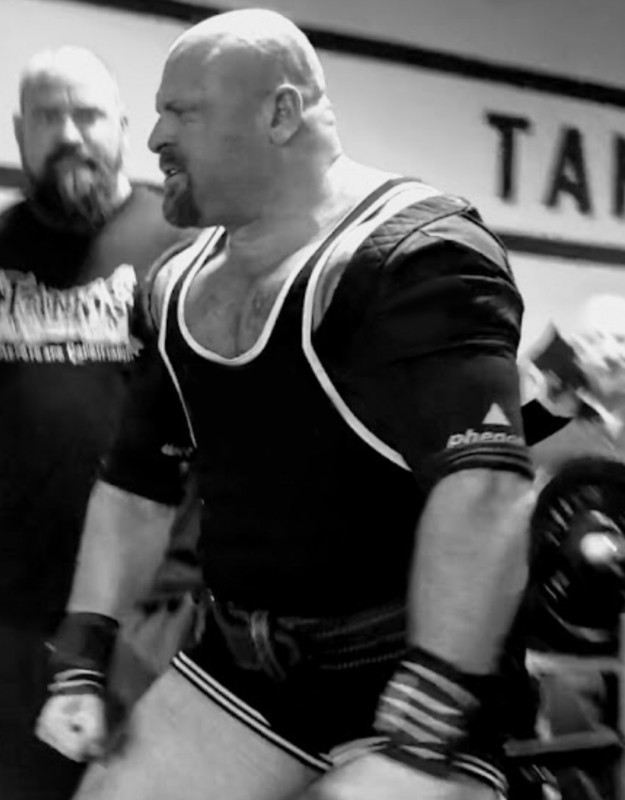
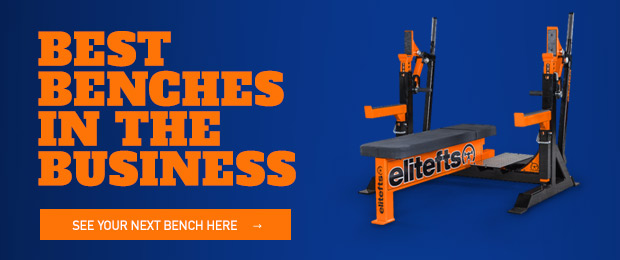
1 Comment